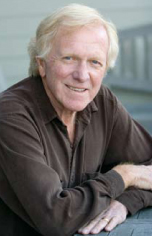Wikipedia, the Internet’s free, up-to-the-minute encyclopedia, defines the term “nonprofit” as “an organization whose objective is to support an issue of private interest or public concern for noncommercial purposes. Nonprofits are involved in the arts, education, health care, politics, religion, the environment or some other endeavor.”
Such organizations were once called charities, or causes. However they’re referred to now, Marin has a slew of them. Based on county records, telephone listings and tax exemption filings, the number is estimated to be 1,800. That’s nearly one nonprofit for every 100 adults living in Marin. Some say that’s ridiculous; others claim it’s a sign of a caring and involved people.
For animal activists there’s Mill Valley’s Save a Bunny (“a leader in rabbit rescue efforts”), West Marin’s Planned Feralhood (“dedicated to improving the lives of wild cats”), and Fort Baker’s Mission Blue Butterfly Team (“to restore the Mission Blue butterfly’s habitats”). Older adults have Keeping Hope Alive (stroke rehabilitation), Senior Access (dementia, Alzheimer’s daycare), and LITA, or Love Is The Answer (seniors suffering loneliness). For younger people, there’s Girls On The Run (“training girls to run a 5K footrace”), Teens for Safe Cosmetics (“raise awareness of cancer-causing chemicals in cosmetics”), and Next Generation Scholars (“Equal access to higher education”).
Marin nonprofits also benefit the environment (The Bay Institute, Headlands Institute, and SPAWN, the Salmon Protection and Watershed Network), agriculture (Marin Organics, Marin Farmers Market Association, and Marin Agricultural Land Trust, or MALT), and the arts (Mountain Play Association, Artworks Downtown, and the Marin Ballet). Some non-profits have lengthy names and dubious missions (San Rafael’s The Institute for Abundant Living, which maintains that “all people should live life to the fullest.”). Others have concise and purposeful titles (Marin Community Clinic, Golden Gate Opera, and Adopt a Family).
Most Marin residents are well aware of the county’s larger nonprofits: Whistlestop, Marin Arts Council, Canal Alliance, Marin Education Fund, Marin Advocates for Children and the Marin Humane Society. But hundreds—and none-the-less worthy—are small and rarely heard of: Trips for Kids, Ambassadors of Hope and Opportunity, and Insight Prison Project.
The list is virtually endless. I’ve mentioned only 32 Marin nonprofits, meaning I left out about 1,768. Think about it. Is there a glut of nonprofits here, as some suggest? “Of course, I believe in having a vibrant nonprofit sector,” says county community leader Catherine Munson. “But nonprofits have to operate in a ‘for-profit’ manner. It’s obvious there’s overlapping of fund raising and missions, which can’t help but dilute the dollars and services provided.”
A differing view is held by Thomas Peters, president and CEO of the Marin Community Foundation, which annually distributes more than 200 grants totaling $25 million to Marin nonprofits. “Frankly, what some say are ‘too many’ Marin nonprofits is more a positive than a negative,” Peters says. “A vital indicator of a community’s social consciousness lies in the number of nonprofits it has.” That said, Peters also feels there well could be overlapping of efforts among Marin’s many nonprofits. “But it’s no different than in the private sector,” he says, “people see needs and are passionate about meeting those needs.”
Recently—in an effort to clear up the cloudy picture of Marin’s many nonprofits—the Marin Community Foundation granted $50,000 (hopefully to grow to $115,000) to the Center for Volunteer and Nonprofit Leadership for a six-month survey of Marin’s 1,800 nonprofits.
“We intend to get an accurate overview of Marin’s nonprofit sector,” says Linda Davis, CEO of the organization, “and stimulate dialogue leading to action wherever it’s needed.” The survey will be conducted by LaFrance Associates of San Francisco, assisted by USF’s Institute for Nonprofit Organizational Management. LaFrance has done similar studies for San Mateo and Santa Clara counties, says Davis, so Marin will be able to compare its nonprofit sector to those other counties.
I estimate the size of Marin’s nonprofit sector at exceeding $150 million a year. But no one knows for sure. Similarly, no one seems to know with certainty if Marin’s needs are being met? Or are some oversubscribed to? The survey is timely indeed. But the need will only be met if the results are carefully tabulated, objectively analyzed, and widely disseminated. That’s my point of view.
What’s yours?
Email [email protected]


